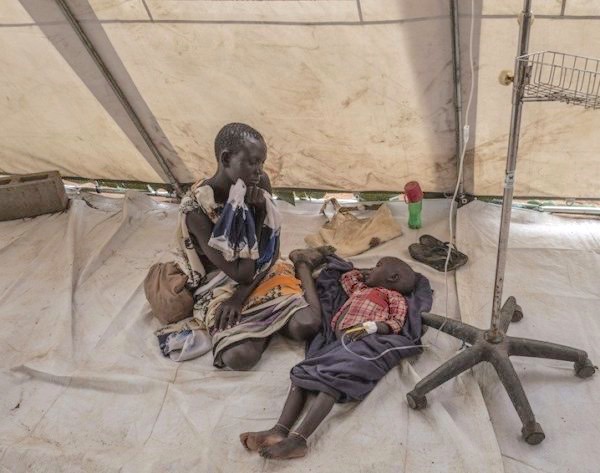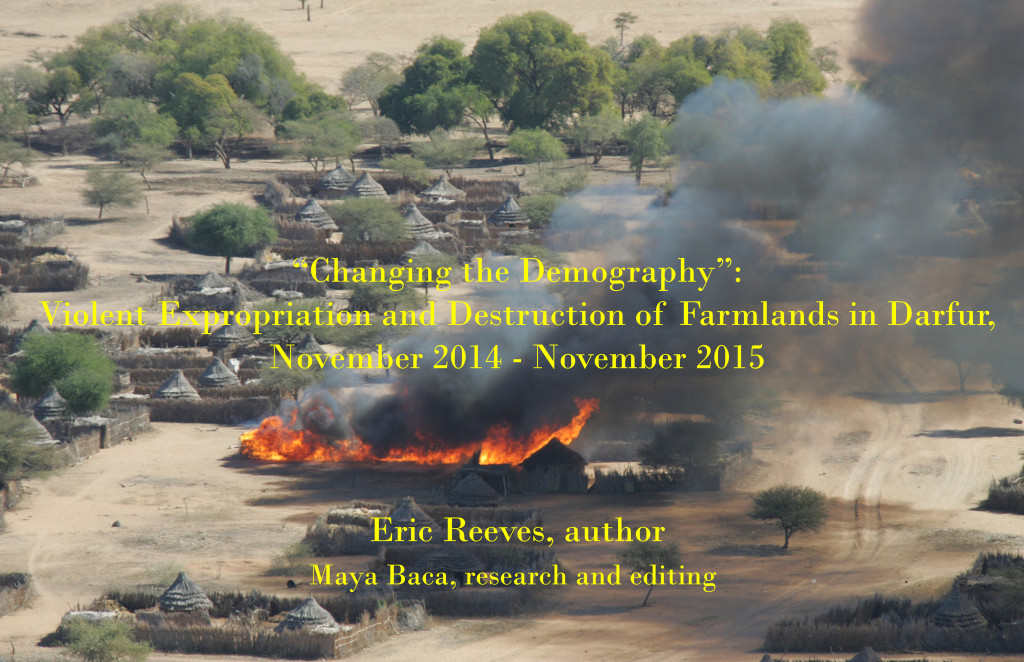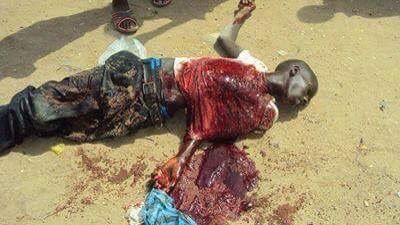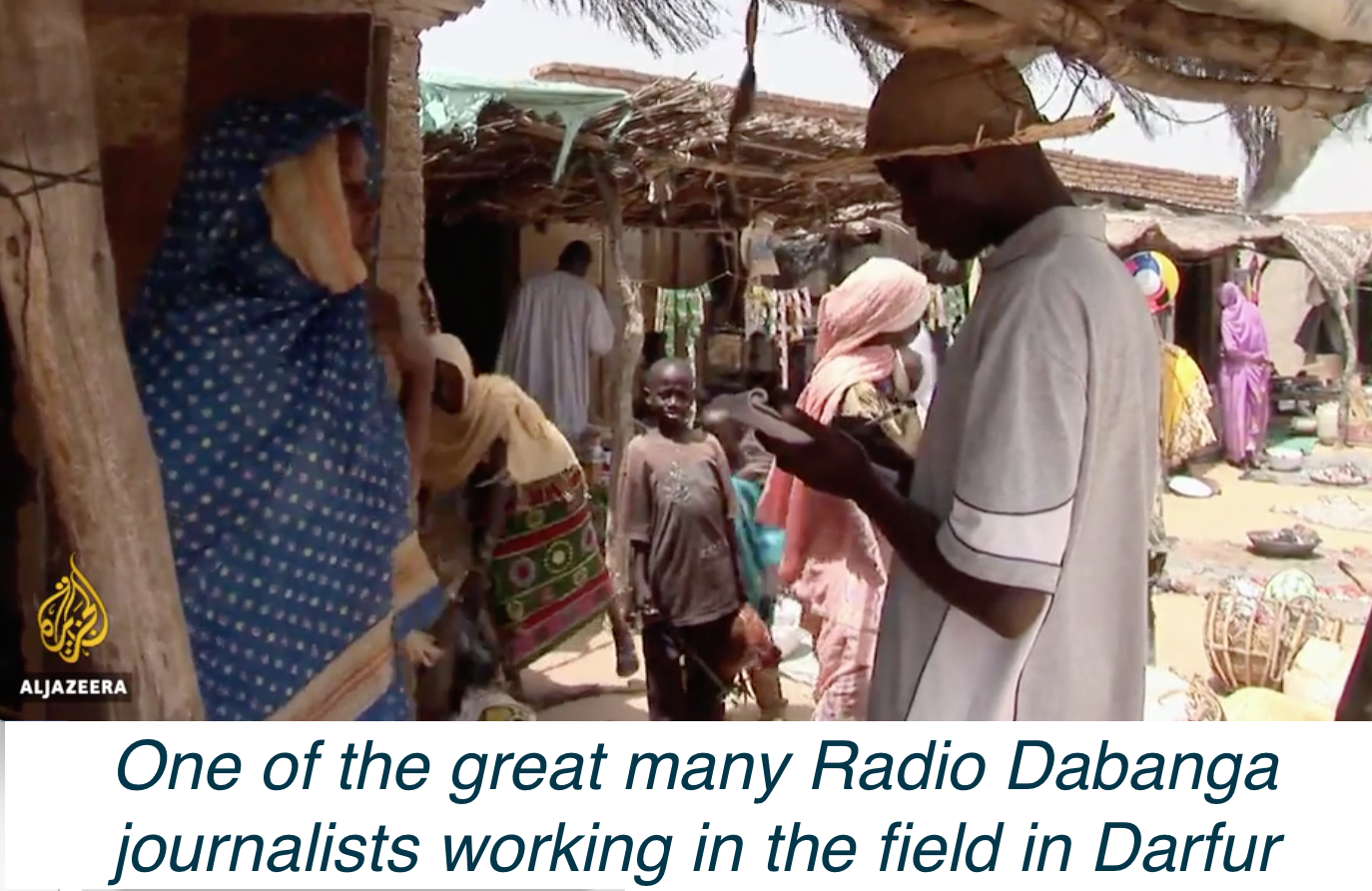Eric Reeves | October 3, 2018 | https://wp.me/p45rOG-2iJ
It is not unusual for reporting by Radio Dabanga and Sudan Tribune to provide important insight into the extreme crises that confront the people of Sudan. But during the past week in particular, Radio Dabanga dispatches, viewed collectively, give an unusually clear picture of how these crises are inter-related, how gross economic mismanagement, the militarization of the regime, and the indifference to the suffering of Sudan’s citizens are directly connected and have produced the economic collapse that fuels not only massive suffering but growing repression, and works as well to sustain extreme violence and insecurity in Darfur.
Outrage in Sudan continues to grow, demonstrations are more frequent, and the Khartoum regime’s response is yet greater repression
The international community has consistently accommodated the Khartoum regime, whether it be the UN World Health Organization’s refusal to confirm and respond to the cholera epidemic beginning in 2016, the failure to confront the regime forcefully for its increasingly repressive domestic security measures, its demonstrably incompetent and corrupt mismanagement of an economy who collapse severely affects many millions of ordinary people, or for its growing reliance on militia forces for security, particularly in Darfur. These same militia forces, particularly the Rapid Support Forces, have been implicated in human trafficking in North Darfur:
“Multilateral Damage: The Impact of EU migration policies on central Saharan routes,” Jérôme Tubiana, Clotilde Warin, Gaffar Mohammud Saeneen (September 2018) | https://www.clingendael.org/publication/impact-eu-migration-policies-central-saharan-routes
Below are dispatches from Radio Dabanga from the last week that bring all the issues I point to in remarkably sharp focus. All emphases in bold have been added; annotations in blue bold italics have been added.
• Sudan economic crisis: Families survive on left-overs from restaurants | Radio Dabanga, October 3, 2018 | KHARTOUM
The left-overs of restaurants in the more luxurious district of El Amarat in Khartoum have become a welcome meal for many impoverished families in the neighbourhood. The manager of a well-known restaurant on the Africa Road, popularly known as Airport Road, told the press in Khartoum on Tuesday that the establishment’s leftovers have become a basic meal for many families. “Some poor people have become customers. We keep their share of el karta, as the leftovers meal is called, for them every day,” he said. “Instead of throwing the leftover food into the rubbish, I have instructed the staff to keep it properly until the people come to get it.” He called it “very unfortunate that many families are now forced to beg for food remains left by well-off customers.”
Sudan is suffering from a chronic lack of hard currency and cash, while exports remain low. High inflation figures caused a severe drop in purchasing power among the Sudanese since early January, after the government implemented major austerity measures. The country also witnessed repeated fuel and wheat shortages. Several economists have warned for an economic collapse.
In a speech to the Parliament on Monday, President Omar Al Bashir said that Sudan has passed through a rise of prices and scarcity of liquidity, and will continue to do so in the future.
[The Khartoum regime consistently and shamelessly lies about the economic catastrophe that has engulfed Sudan, and to which the world community has failed to respond—ER]
• Cash shortage threatens Sudan’s sesame, sorghum harvest | Radio Dabanga, October 1, 2018 | EL GEDAREF
The head of the agricultural committee of El Gedaref state legislative council, El Safi El Awad, says that the state needs SDG 1.5 billion ($53.2 million*), one million workers, and 132,000 barrels of diesel to harvest sesame and sorghum crops. He warned of the failure of harvesting operations and the loss of more than nine million acres of cultivated area for this season. The director-general of the Ministry of Agriculture of El Gedaref, Nafisa Noh reported that farmers are selling grain at less than half its price due to their need for cash amid the current liquidity crisis. On Sunday, a delegation from El Gedaref state arrived in Khartoum to discuss the issues surrounding the cash shortage.
[The absence of liquidity and thus the ability of banks to extend loans to farmers, compounds what is already an extremely serious malnutrition problem in Sudan. The UN’s Office for the Coordination of Humanitarian Affairs has long indicated in its reports on Sudan the there are more than 2 million people in the country who are “Acutely Malnourished”—and yet the regime refuses to provide assistance and denies international humanitarian assistance in many areas, especially in Eastern Sudan—ER]
“Dire consequences for the harvest”
Farmers in El Gedaref say that the cash shortage will have dire consequences for the harvest. The sesame harvest is now in its early stages, but banks have refused to allow farmers to withdraw enough cash to pay employees and costs. Farmer Haydar El Badawi told Radio Dabanga that the banks in El Gedare state have refused to give farmers more than SDG2,000 ($71*) a day. “This foreshadows problems between farmers and workers.” The southeastern state is highly important for the country’s agricultural output.
[The clear implication is that malnutrition will grow throughout Sudan in the coming months—ER]
• Cash crisis discourages vital farming in Sudan | Radio Dabanga, September 28, 2018 | EL GEDAREF
Farmers in El Gedaref said that the liquidity shortage will have dire consequences on the harvest. The sesame harvest is now in its early stages, but banks have refused farmers to wihdraw enough cash to pay employees and costs. Farmer Haydar El Badawi told Radio Dabanga that the banks in El Gedare state have refused to give farmers more than SDG2,000 ($71*) a day. “This foreshadows problems between farmers and workers.” The southeastern state is highly important for the country’s agricultural output.
[Again, the connection between economic collapse and the lack of food production could not be clearer—ER]
El Badawi expected the sesame harvest to face a crisis in the coming weeks because of the looming shortage of labour. Ethiopian farmers who seasonally work on the farms in Sudan are “reluctant to come, because of the collapse of the Sudanese Pound.” Recently a report confirmed that sesame fields owned by about 32 farmers amounting to 8,040 acres have been subjected to damage by spraying pesticide. More than 50 farmers in El Gedaref state had filed a criminal complaint for damage to vital crops by aerial pesticide spraying operations. Some of them state it’s an estimated 90 per cent loss of sesame.
[More potentially catastrophic news from the agricultural sector, which has declined sharply during the time of the National Islamic Front/National Congress Party regime—ER]
Meanwhile, farmers in El Gedaref state also warned about the looming failure of the upcoming winter season because of the high price of fertilizers. Farmer Abdeen Bargawi told Radio Dabanga that the price of a sack of dap fertilizer has risen from SDG450 to SDG1,350 ($48) and urea from SDG365 to SDG730 ($26). Bargawi said that a number of small farmers also refrained from farming because of the rising costs and the low prices of encouragement set by the Agricultural Bank (750 Sudanese Pound).
Leading economist Dr Sidgi Kaballo asserts that the ongoing liquidity crisis in Sudan stems from lack of confidence in the banking system and poor treasury cash-flow management. Sudan’s Minister of International Cooperation, Idris Suleiman, recently remarked that one of the causes of the liquidity crisis in the country is that 90 per cent of the cash mass is being circulated outside the banking system.
[The inevitable consequence of cash flowing outside the banking system is that banks cannot extend the loans that are crucial for agriculture—a greater catastrophe is in the making—ER]
• Sudan’s diplomats, officials accused of trading forex on black market | Radio Dabanga, September 27, 2018 | KHARTOUM
Sudan’s former Undersecretary of Trade, Mohamed Nur Hamid, has accused ambassadors and officials of selling foreign currency on the black market. Speaking at a forum in Khartoum on Tuesday, he said “ambassadors and officials change their foreign currency on the black market while they want us to change it in the banks.”
[In the midst of a currency and liquidity crisis, cronies of the Khartoum regime are exacerbating the problems for personal gain—ER]
The Union of Banks held the Bank of Sudan (CBoS) responsible for the liquidity shortage and expected further drying-up of liquidity following its recent decisions. The union explained that 90 per cent of the cash mass has moved out of banks. Traders and businessmen complained of a worsening liquidity crisis in banks and considered the CBoS announcement to address the liquidity crisis within two weeks as “mere painkilling rhetoric.”
Liquidity crisis
Leading economist Dr Sidgi Kaballo asserts that the ongoing liquidity crisis in Sudan stems from lack of confidence in the banking system and poor treasury cash-flow management. Sudan’s Minister of International Cooperation, Idris Suleiman, has remarked that one of the causes of the liquidity crisis in the country is that 90 per cent of the cash mass is being circulated outside the banking system.
• Six die of “diarrhoea” in eastern Sudan’s Kassala | Radio Dabanga, October 3, 2018 | KASSALA
On Sunday and Monday, six acute diarrhoea patients died in Kassala state. Speaking to Radio Dabanga, an activist reported that four patients died in El Digein in Aroma on Sunday. Two others died on Monday. “There are hardly any healthcare workers in the area. Therefore, we do not know the causes of the diarrhoea,” he said. He called on the authorities to intervene to contain the disease.
[There is a clear possibility that this diarrhea is cholera, which has not been confronted by either the Khartoum regime or the UN’s World Health Organization since the presence of the deadly and highly contagious disease was first authoritatively confirmed in lab settings in 2016. There is no evidence that WHO will take ominous reports over the past several months any more seriously than during the previous two years. See | “As the death toll climbs in Sudan, officials shy away from the ‘cholera’ label,” The Washington Post, September 17, 2017—ER]
Diarrhea is not one of the symptoms of Chikungunya, currently raging in eastern Sudan—ER]
One of the many thousands of cholera victims in Sudan
Chikungunya
Kassala is currently plagued by chikungunya fever. The outbreak began in August after heavy rains hit the state and El Gash river flooded large pieces of land. Earlier this week, government officials reported that at least 13,400 people are infected with the mosquito-borne disease. More than 2,000 patients must have died. According to medical doctor and university professor Tajeldin Mohamedein, “the health of many people in eastern Sudan is far from good because of poor nutrition caused by poverty.”
• Chikungunya “spreading in Sudan”; Kassala reopens schools | Radio Dabanga, October 3, 2018 | KHARTOUM / KASSALA
According to the Communist Party of Sudan, the chikungunya* epidemic is spreading from Kassala state to the north-west. The Governor of Kassala has reversed the decision of the state’s Ministry of Education to close schools for three days because of the epidemic. The medical sector of the party reported on Tuesday that ten cases of chikungunya fever were recorded in El Gedaref, eight in Northern State, and five in Khartoum last week. In a press statement, the party urged “an immediate declaration of Kassala as an epidemic zone,” and advised the closing of schools and universities in the state.
Residents of Kassala have expressed concern and anger at Governor Adam Jamaa’s cancellation of the decision of the Ministry of Education to close all schools in Kassala town for three days because of the epidemic. They told Radio Dabanga that government vehicles roamed the town on Monday evening announcing via loudspeakers the cancellation of the measure.
Lack of laboratories
The outbreak of chikungunya fever, popularly known as kankasha, began in August after heavy rains hit the state and El Gash river flooded large pieces of land. Medics lament the fact that there are no well-equipped laboratories in the state. “Blood samples can only be analysed in Port Sudan or Khartoum,” one of them explained. “As transport is difficult because of the rains, if not impossible at the countryside, many people die without a medical examination.” Medical doctor and university professor Tajeldin Mohamedein told this station that he does not rule out the presence of dengue fever in Kassala as well. “The only solution is to combat the vector of the disease,” he said.
No deaths – Two per cent fatal
Activists are calling on social media for support to halt the epidemic. On Twitter for example the hashtag #KassalaIsDying is being used (#كسلا_تحتضر). They accuse the Sudanese authorities of sweeping the real numbers of infected people under the carpet, and criticise them for not doing enough. Residents of Kassala have reported aircraft spraying pesticides. Earlier this week, government officials reported that at least 13,400 people in Kassala are infected with the mosquito-borne disease.
According to the UN World Health Organization (WHO) the combat of the disease requires $5 million in funding.
[Failure by the Khartoum regime to provide even the meager funds required to confront the disease is entirely in character—ER]
• High child mortality reported in Sudan’s Blue Nile state | Radio Dabanga, October 2, 2018 |ED DAMAZIN / EL ROSEIRES
Five children have reportedly died in Blue Nile state within a week, where hospitals are overcrowded with patients. Medical statistics from the two hospitals in Ed Damazin and El Roseires also claim that 1,400 people a day present themselves for treatment. The minister of health of Blue Nile state, Abdelrahman Bilal, said that the figures for mortality rate of children show 90 deaths out of 1,000 cases. He did not report which disease the children suffer from. Bilal attributed the high child mortality rate to the lack of a children’s hospital in the state.
“Acute watery diarrhoea”
In May and June, cases of “acute watery diarrhoea” were admitted to Ed Damazin Hospital. Sources said that the cases emerged after a week of heavy rainfall and that there has been a move by Ed Damazin health authorities to combat the disease.
[By failing to confront the cholera epidemic in 2016, the Khartoum regime—and the UN’s World Health Organization—may well have allowed the disease to become endemic in areas like Blue Nile—ER]
Blue Nile state was the first Sudanese state in August 2016 to report cases of a disease suspected to be cholera. In spite of numerous independent confirmations (conducted according to World Health Organization standards) that the disease which broke out was indeed cholera, the Sudanese authorities and several international organisations [including WHO] have persistently referred to it as “acute watery diarrhoea.”
The unwillingness of Khartoum to declare the epidemic severely affected national and international efforts to provide proper treatment and protection.
The WHO and the Sudanese Ministry of Health reported in mid-October 2017 that the nationwide number of recorded cases reached more than 35,000 people – including 800 related deaths. Doctors of Sudan’s National Epidemiological Corporation reported in early July however, that nearly 24,000 Sudanese had been infected and 940 cholera patients died.
• New study on “war economy in Darfur” | Radio Dabanga, October 1, 2018 | DARFUR
The perpetuation of the war in Darfur and economic distress in Sudan has prompted people to seek out alternative resources outside the control of the government. A new study released by the African Centre for Justice and Peace Studies (ACJPS), which advocates and monitors human rights in Sudan, examined the “war economy in Darfur,” focusing on the cross-border trade in vehicles which the study asserts is partly fuelled by gold in the pockets of Darfur’s armed militias.
The study suggests: “The gold trade puts more than $123 million annually into the pockets of armed militias in Darfur. That is on top of $54 million taken in by the Musa Hilal militia. From 2010 to 2014, some $4.5 billion worth of gold was smuggled from Sudan to the United Arab Emirates.”
The study argues: “Starting in 1989, the Sudanese economy began to lose its memberships in the major economic organizations. That came on the heels of efforts to implement what was called an Islamic economic system, although it was nothing but slogans for which the political Islam project could find no precedents for practical application. In addition, the economy suffered the impact of neglect of agricultural, pastoral and forest resources.
See also | “Multilateral Damage: The Impact of EU migration policies on central Saharan routes,” Jérôme Tubiana, Clotilde Warin, Gaffar Mohammud Saeneen (September 2018) | https://www.clingendael.org/sites/default/files/2018-09/multilateral-damage.pdf/ —ER]
• Darfur: Farmers attacked, displaced men arrested | Radio Dabanga, September 21, 2018 | DAR EL SALAM / NIERTETI / NYALA
Two farmers were attacked in North Darfur on Wednesday. In Central Darfur, three camp residents were arrested on Monday. Farmers Adam Mahmoud Ibrahim and Um Kalthoum Yahya Omar were farming in Arashu, in Dar El Salam locality, when gunmen trespassed the farms. One of their relatives said that the four gunmen were herders. “The herders let their cattle and camels graze on the farms. When the farmers objected, they beat them with sticks and caused them injuries.” The victims have been taken to Shangil Tobaya for treatment.
On Monday, members of the military intelligence arrested three displaced people from Tur camp in Nierteti locality in Central Darfur, and took them to an unknown destination. Eyewitnesses told Radio Dabanga that the military intelligence stormed the house of Yahya Abulgasim, Abdelrazig Abdelrahman and Muzamil Osman and took them to an unknown destination in their vehicle. Relatives of the three detainees inquired about their family members at the military garrison of Tur, as well as the station of the Central Reserve Forces. “They denied that the detainees were being held there.”
[Such attacks and arrests remain commonplace, despite claims by the Khartoum regime—echoed by many disingenuous international actors, including the UN—that security has been fully restored in Darfur, justifying the withdrawal of the UN/African Union peacekeeping force—ER]
Kalma camp
On Thursday, members of the Rapid Support Forces (RSF) reportedly stormed Kalma camp in Nyala locality, which sparked panic among the displaced. They drove into the camp with a vehicle. The spokesman for Association of Displaced People and Refugees in Darfur, Hussein Abu Sharati, said that the incident coincided with a meeting on the commemoration of martyrs of deadly events in Kalma.
[For an account of the infamous Kalma massacre of August 2008, see my article in The Wall Street Journal: “Now Sudan Is Attacking Refugee Camps,” The Wall Street Journal, 6 September 2008 (with Mia Farrow) | http://online.wsj.com/article/SB122065894281205691.html?mod=googlenews_wsj
At 6am on the morning of Aug. 25, Kalma camp, home to 90,000 displaced Darfuris, was surrounded by Sudanese government forces. By 7 a.m., 60 heavily armed military vehicles had entered the camp, shooting and setting straw huts ablaze. Terrified civilians — who had previously fled their burning villages when they were attacked by this same government and its proxy killers the Janjaweed — hastily armed themselves with sticks, spears and knives. Of course, these were no match for machine guns and automatic weapons. By 9am, the worst of the brutal assault was over. The vehicles rolled out leaving scores dead and over 100 wounded. Most were women and children.
Violence directed against civilians in and around camps for displaced persons, by the military and militia forces of the Khartoum regime, has been murderous for well over a decade
• Central Darfur Girl shot by herders | Radio Dabanga, September 24, 2018 | NIERTETI
Herders shot and wounded 13-year-old Manasik Hamid, a displaced girl of Nierteti camp in Central Darfur. A relative of the victim told Radio Dabanga that one of the herders opened fire while she was gathering firewood with three other girls at Kebe area north of Nierteti and seriously wounded her.
[The attack on 13-year-old Manasik Hamid, in its invisibility except for reporting by Radio Dabanga, stands as emblematic of what the world has chosen not to see—ER]




